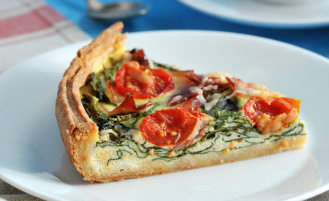Healthy Eating on a Budget
November 12, 2020
With people staying home due to COVID-19 restrictions, demand for grocery items has increased, which in turn has driven up their cost. In fact, this past April saw the largest one-month jump in grocery costs in 46 years. To help navigate how to eat healthy on a budget, the following is a list of tangible tips on how to save money while grocery shopping, my recommended apps for meal planning and making grocery lists, and how to choose items that are both economical and healthy.
Smart Shopping Tips
- Shop alone, and don't head into the store hungry. Having extra people along (especially kids!) or a growling stomach often means extra food in the cart and extra money spent at checkout.
- Be a list lover; don't leave home without it. Shopping lists help shoppers stay focused and resist high-price, low-nutrition impulse buys. It is helpful to organize your list aisle by aisle to save time.
- Stick to the perimeter. Foods with the most nutritional value are typically found on the store's perimeter. That's where produce, fresh meat, dairy and bread can be found. High-traffic areas are typically located in the back of the store, so shoppers are more likely to pass through the inner aisles where processed and convenience foods are found, encouraging impulse buys.
- Look high and low for the best buys. The more expensive brands and impulse buys are at eye level, whereas store brands and better buys are often located on the top and bottom shelves.
- Take advantage of store specials. If blueberries are on the shopping list, but the store shows apples to be a better buy, consider making a switch to save money.
- Buy store brands. Switch to store brands or generics to save 20–30% on your food bill.
- Skip “special” foods. If you have diabetes, avoid special “diabetic” food items, which are not necessarily lower in carbohydrates and are typically higher priced than regular versions of the same foods.
- Cut costs with digital coupons. Coupons have gone high tech and can be printed from popular coupon web sites such as coupons.com or received via text messages and downloaded to supermarket rewards cards for scanning at checkout.
- Sign up for an account where you shop. Rewards cards offer shoppers savings on selected items, and digital coupons can be loaded to your card to be redeemed in store.
- Buy in-season produce. Fruits and vegetables that are “in season” are a best buy. Consider buying extras and freeze them to use throughout the year. Economical and nutritious choices in the winter months include apples, cabbage, carrots, oranges, tangerines and turnips.
Dietitian Pro Tips
I have found the following apps to be invaluable tools to help me and my family save time and money with meal planning and grocery shopping. Try them!
Simplify meal planning. Use Mealime to plan your meals for the entire week in minutes. Mealime builds a meal plan personalized to your eating preferences and provides an organized shopping list with all your ingredients auto-sorted into categories, or choose the grocery delivery or pick-up options. You can send your grocery list to Kroger, Walmart, Instacart or Amazon Fresh by choosing the shortcut button on your grocery list.
Start building your meal plan by selecting your menu type preference. Next, add any allergies and ingredients you dislike. Then, select your meal size. Your meal plan is ready in seconds, along with your grocery list. You can also use the advanced filters and select grocery price to filter meal plans by cost for additional savings.
Simplify grocery lists. Use OurGroceries to keep track of your shopping lists in one place, and keep those lists instantly synchronized on all smart devices in your household.
Additional Tips
Use the following tips to choose proteins, grains, fruits and vegetables that are both economical and healthy.
Proteins
- Canned and dried beans, peas and lentils are inexpensive and good sources of fiber and protein.
- Look for sales on meat, poultry, fish and shellfish in weekly advertisements.
- Tuna canned in water, sardines and salmon.
- Natural peanut butter with two or fewer ingredients. Choose Adams peanut butter or a store brand such as Kirkland Signature.
- Eggs.
- Cottage cheese – 2%.
- Greek yogurt with less than 5–7 grams of added sugars, such as Carbmaster, Two Good, Oikos Triple Zero or plain yogurt. Purchase yogurt in 32-ounce containers for additional cost savings.
- Purchase fish and shellfish that is frozen, as it less expensive than fresh fish.
- Tofu.
Grains
- Brown rice. Buy generic or store brands. Try Trader Joe’s brown basmati or brown jasmine rice.
- Whole grain, lentil or chickpea pasta. Try Trader Joe’s lentil pasta or Banza brand chickpea pasta that can be purchased at Costco or your local grocery store.
- Purchase whole grain breads on sale and freeze them. Look for bread with whole wheat flour as the first ingredient.
- Quinoa, farro, millet, bulgur or barley. Add pearl barley to soups for additional fiber.
- Oats such as five-minute cooking or steel cut oats. Avoid instant oats and flavored instant oat packets.
Fruits and vegetables
- Purchase frozen fruits and vegetables.
- Buy canned vegetables with “No Added Salt,” or drain and rinse canned vegetables in a strainer for a 40% reduction in salt content.
- Use your freezer! Buy (freezable) foods in bulk when it is on sale. Freeze leftovers.
- Buy Lean Cuisine and Healthy Choice entrees when they are on sale and stock up. These are lower in calories and fat. However, be aware of the sodium content. Choose entrees with less than 700 mg of sodium.
- Purchase canned fruit in its own juice.
Other Tips
- Make your own soups and casseroles with any suitable leftover items to prevent waste.
- Caution: Buying in bulk does not always save you money. Read the price card to see how much the store is charging per ounce (or other measurement). For example: 95 cents per ounce versus 98 cents per ounce.
- Pack your lunch.
- Eat out less or order take out less often.
- Proper planning: Map out meals for the week and base your grocery shopping on your list.
- One-pot dishes are great all-around: They save on prep time, money and dishwashing, and often make great leftovers.
Food Assistance
If you are in need of immediate food assistance, the following resources will help you find a hunger relief organization near you.
HopeLink: Nonprofit organization that operates five food banks with service centers in Bellevue, Kirkland, Redmond, Carnation and Shoreline.
WSDA : Washington State Department of Agriculture.
Washington 211: Free service that provides a list of free meals, senior meals, food banks, food pantries, and grocery delivery or home delivered meals by zip code.









